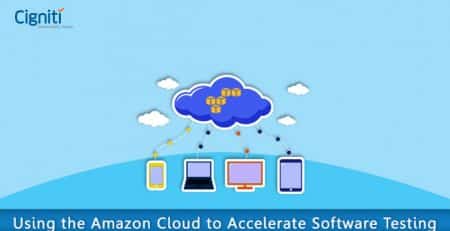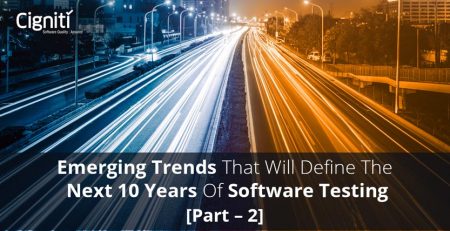Make Data Visualization More Powerful and Engaging with Animation
Information that can be seen has always been valuable. Whether it was in the distant past when early humans lived in caves or in the world of data today. Using visuals to support information simply makes it more accessible to its target audience. Today, pictograms and motion graphics are crucial for communicating information. Infographics make life easier and contribute to our knowledge of the world and the information we read.
The presentation of information in a way that encourages decision-making is a major difficulty for organizations today. To better understand massive amounts of data, there is a need to select and set up the best technical tools. Making strategic decisions is made easier with the aid of real-time data visualization.
The process of turning raw data into information in the form of visuals and text that the human brain can process more quickly and efficiently is known as Data Visualization. The same might be animated to add life to the facts and expand the scope of the narrative.
An organization may employ data analytics and data visualization, two potent business intelligence (BI) tools, to harvest its enormous data collection. Without the accompanying technology to mine, process, organize, and analyze the data, it is useless. The insights that can be gained from company data are what give it its true worth.
It is impossible to use data analytics and data visualization separately. Both should cooperate in the highly competitive market of today in order to maximize the potential of your data.

Moving from static to dynamic information is known as Animation in Visualization. In some circumstances, the procedure even makes it easier for users to engage with the data. The main goal of such animation is to identify the underlying pattern rather than to explore the data. Understanding trends, dispersion, and outlier reasoning become simple.
Why Animation?
Engagement – Organizations may now more easily develop Dashboards, thanks to a variety of tools. The content on the dashboard has to stand out from the crowd and pique customers’ curiosity in order to attract them.
Emotion – Animations improve communication with viewers. Human perception, attention, learning, and memory are all easily influenced by it. Adding a unique touch makes an impression that lasts, forges an emotional connection, and is hence effective in spreading information.
Information Identification – A shooting star is the most fascinating star in the night sky. Similar to this, a moving item with obvious writing gives the audience a clear signal as to its significance. Utilizing human sensitivity promotes uniformity in the information provided to various audiences.

Illustrating Progression – A change in the visualization’s degree of detail may readily be used to depict cumulative effects in time sequences.

Understanding Changes – The chart instantaneously changes when a filter is changed in static visualizations. Knowing how many data points were moved to reorganize the data according to the new filter might be important at times.

Types of Animation in Data Visualization
There are primarily 3 types of animations in data visualization, they are:
- Narrative Storytelling
- Multiframe Sequence
- Transitions between States
Narrative Storytelling – Simple dashboards with cause-and-effect visuals are used to convey this. This is written in a descriptive style and is primarily explained while scrolling.
Multiframe Sequence – It is the playback of a video that has been completely seen to gather information. The ability to advance and pause allows the user to fully immerse themselves in the topic being covered by the dashboard.
Transitions between States – When a filter is shown to change, it helps to highlight the consistency of the data within the same graph.
Types of Transitions
There are seven types of animated transitions:
- View transformation
- Substrate transformation
- Filtering
- Ordering transition
- Timestep transition
- Visualization change
- Data schema change
View transformation – These are transitions with simple camera movements i.e lateral or zoom.
Substrate transformation – These include spatial changes where the grids and axes are anchored.
Filtering – Simple removal of elements owing to some criteria is considered filtering animation.
Ordering transitions – Arrangement of data points in descending or ascending order to give clear indications.
Timestep transitions – Showing the change in data over time fall under this category.
Visualization change – Transition from one kind of chart to another which include shape, color, and size.
Data schema changes – These explain the change of data by imposing the newer set on the existing and facilitating comparison.
Tools for Animating Data Visualization
The best tools used for animating data visualization are as follows:
- Tableau
- Power BI
- Dundas BI
- Flourish
- Visme
- Adobe
Tableau – It has an integrated function for animation. We may select Animation from the Format option, which is pre-set to “On.” The animation’s duration and style can then be chosen. This offers Sequential and Simultaneous choices. To play all animations simultaneously, choose simultaneously, or choose sequential to move and arrange the markings before fading them back in. To create an animated data chart, we must first add the required field of animation to the Pages Shelf. However, Tableau does not allow for the animation of the following features:
- Maps, polygons, and density marks in web browsers
- Pie and text marks
- Headers
- Forecasts, trends, and reference lines
- Page history trails
Power BI – Microsoft provides a collection of visualizations that include animation by default. To get more visuals, we must select “Get more visuals” under the Visualization section. We can now search for animated charts from the dialogue box that has been created and “Add” them to the visualization area as needed for our dashboard. The provided collection of pre-animated graphics remains the sole restriction.
Dundas BI - It is an all-inclusive business intelligence platform that enables users to make dashboards, reports, and slideshows that tell stories. It is possible to employ live interactive data views that combine scorecards and dashboards to convey the findings. Additionally, a remark may be affixed above the data visualizations.
Flourish – Another program that enables visualization creation. The benefit is that there won’t be any more strain placed on your device because it doesn’t require installation. The web browser can be used to connect to it directly. It just requires a spreadsheet to be uploaded, a connection to the live source, or integration with the API. It also enables theme customization following organizational standards. The fact that the project may be seen on any device and that it can be published are further advantages.
Visme – Without needing to be installed, this may also be utilized online. The tool can only provide precise data-driven visualizations, though. To clarify, the interface for building a graphic does not allow for computation or data shaping.
Adobe – An extensive design framework. The dashboards and tales that are produced have more visual appeal. To achieve the desired design, some software experience is required.
Conclusion
Storytelling will become more competitive as the market and demand for data visualization grow. It is not a natural talent and must be developed through time by extensive analysis and interpretation of the data at hand. The projectable format of our thinking can only be created by the tools at our disposal. The user possesses the true power of imagery and narrative, and the aforementioned technicalities can help them think more clearly.
Your organization wants to depend on data-driven insights to guide choices across the board. But when there are more and more rows of data, the noise increases quickly. The secret to telling the real story that your data has always wanted to tell is data visualization. You may liberate information silos and advance transformation for your career and your organization by developing effective visualization on agile and extensible contemporary data platforms.
At Cigniti, we assist you in converting vast and complicated data into beautiful visuals that may quickly and effectively address your unique business concerns. We offer data visualization advice, implementation, and support services. The data science team at Cigniti can assist you in transforming data from many sources into interactive graphics, enabling you to monitor objectives and performance, uncover opportunities, forecast demand, and more.
Cigniti is ready to assist you in visualizing data and extracting useful information from it to enhance your decision-making. Want to know more? Visit https://www.cigniti.com/digital-engineering/





Leave a Reply